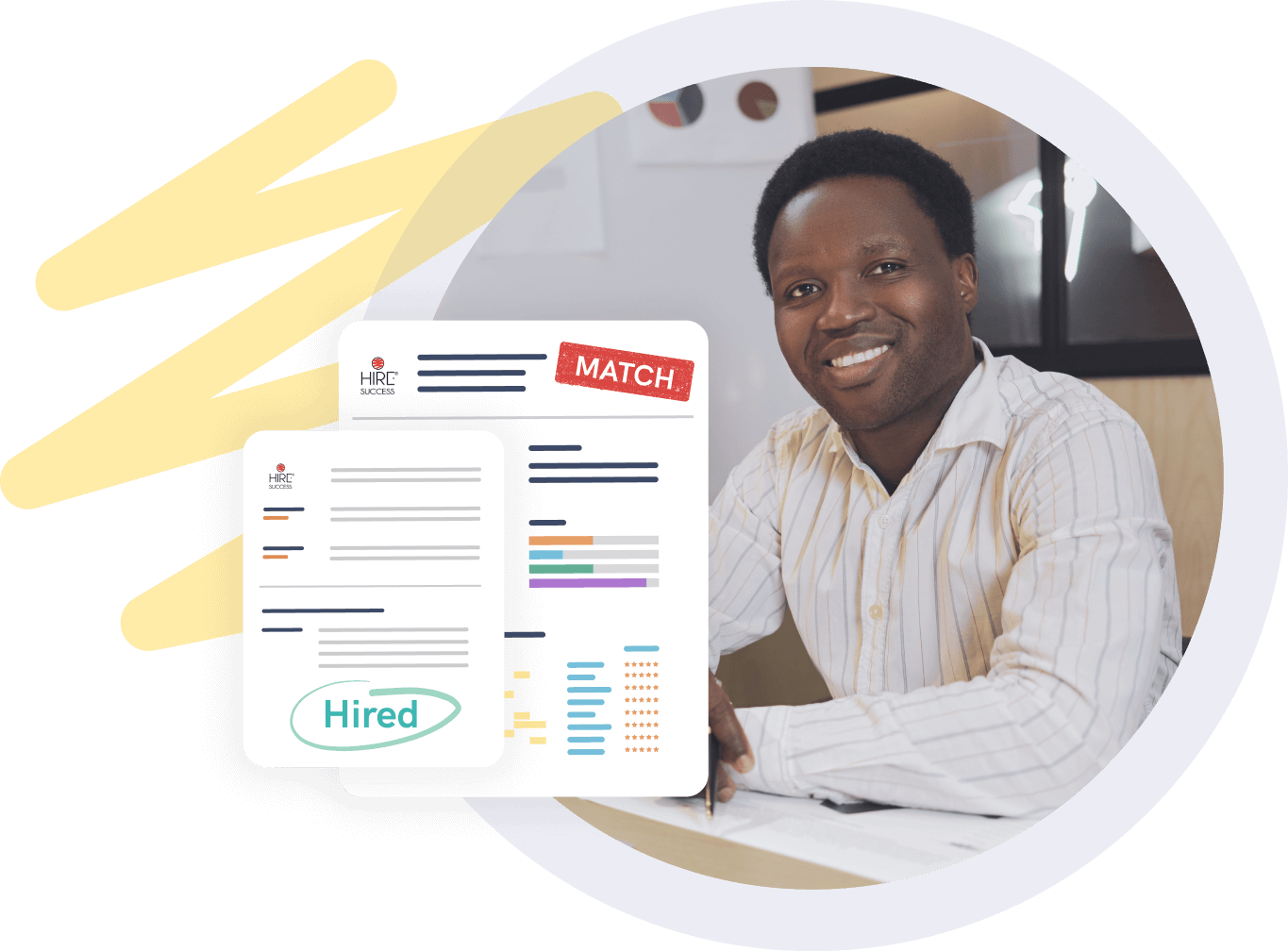When it comes to hiring new employees, the stakes are high. Every time you make a bad hire, you’re left with the costs of recruiting, onboarding, and training a replacement. These costs can add up quickly — and may even be enough to jeopardize your company’s budget. To protect your bottom line, it’s important that you properly prepare before recruiting and hiring. And as you do so, it helps to know what the top hiring mistakes are and what you can do to avoid making them.
Hiring Mistake #1: Writing job postings that aren’t specific or intentional
It’s not unusual for employers to make mistakes when creating job postings and descriptions. For example, they may fail to describe their company and explain its mission, list vague or misleading job duties, or focus their search on the wrong skills and experiences altogether. Since job postings are how a potential candidate forms their first impression of a company, mistakes like these can definitely be costly — not only because of the prolonged and potentially unfruitful hiring campaign, but also because of the potential talent lost.
To ensure that your job postings attract the right candidates, you should be very clear and specific about the skills, education, and experience required. But just as important is determining the kind of person you want in the position and understanding the language that will appeal to them. This can be done by creating benchmarks that outline the traits and qualities essential to a given position.
Once you know who your ideal candidate would be, you’ll have a better idea of what language to incorporate into your job posting. For instance, if you find that you need a Type A personality for a role, you may want to mention how much opportunity, independence, and potential for reward the position promises. And what’s more, once your hiring campaign begins, you’ll be able to easily identify top candidates by matching them up against the baseline you established.
Hiring Mistake #2: Asking the wrong interview questions
Another common hiring mistake is asking interview questions that fail to get to the bottom of who an applicant really is and what they’re capable of. When this happens, it’s often because the interviewer lacks a clear understanding of what they’re looking to assess, leading them to fall back on stock questions that the candidate has likely already heard and prepared answers for. As a result, the interviewer is unable to get the information they need to make a confident hiring decision.
Before interviewing a candidate, you should know what you’re going to assess in the interview and how you’re going to do it. Personality testing can help you determine this, as well, offering useful insights into a candidate’s character traits and job behaviors. You can then use the results to create candidate-specific interview questions that are unique and much more likely to elicit a response that isn’t canned. That kind of candid, nuanced information is the whole purpose of interviewing final candidates and leads to more informed, more confident hiring decisions.
Questions to avoid when interviewing potential hires
Even if an interview question sounds good on paper, it’s important to consider what you’ll get out of asking it to a candidate. If it does nothing to inform your hiring decision, you’re better off leaving it out of the interview. Additionally, some questions are illegal for an employer to ask and should never be included in the interview process.
Some examples of illegal interview questions:
- What year were you born?
- Do you have any disabilities?
- What country are you from?
- Can you provide a birth certificate?
- What’s your current marital status?
- Are you currently pregnant?
- Do you have any children?
- What are your childcare arrangements?
- What’s your sexual orientation?
- What are your religious beliefs?
- What’s your veteran status?
- Have you ever filed a workers’ compensation claim?
Additionally, some interview questions lack value and are better off avoided, such as the following:
- How long was your commute here?
- What was your previous salary?
- Why did you apply for this position?
- Are you interviewing with any other companies?
- What was your GPA in college?
- What’s your greatest weakness?
- Do you have any children?
- What would your last employer have to say about you?
- Where do you see yourself in five years?
- Do you plan on retiring soon?
- Why should I hire you?
Invest in future performance, predict long-term fit
Use our personality assessment to identify candidates who will thrive in their role and in your evolving organization.
Book a demo Try it free
Hiring Mistake #3: Overlooking the importance of soft skills
Soft skills are highly regarded in today’s workforce, with 92% of executives agreeing they’re equally as important as technical skills. Yet, failing to investigate a candidate’s soft skills remains one of the top hiring mistakes that employers make, often resulting in low-quality hires and increased turnover rates.
Soft skills may not be as easy to identify as hard skills, but with the help of personality testing, you can get a better understanding of how a candidate thinks and works. For example, you’ll be able to tell whether they’re introverted or extroverted, if they’re better at working independently or on a team, and what their disposition is toward problem solving or communication. This will allow you to more accurately predict the candidate’s on-the-job performance and likelihood of success.
Hiring Mistake #4: Wasting time on unqualified applicants
Nearly 75% of employers admit to having hired the wrong person for a position. Selection errors in recruitment can be costly, squandering valuable time and resources. And more often than not, those mistakes result from spending time on applicants who don’t even meet the necessary qualifications for the job.
Developing an efficient hiring workflow can help you bypass unqualified candidates and avoid making bad hires. For example, administering skills testing — whether general or job-specific — early in the application process can help you determine top candidates and confidently start shortlisting before you invest the time in reading every single cover letter and résumé. A good applicant tracking system can serve these tests automatically, sparing you even more administrative burden. And by reserving interviews only for the top talent on your shortlist, you can be assured that your resources are being used most efficiently.
Hiring Mistake #5: Choosing from a small talent pool
Some employers make the common hiring mistake of selecting candidates from a limited talent pool. This increases the chances of settling for a candidate and can lead to increased turnover, in turn forcing the employer to deal with the financial impact of a bad hire.
To expand the size, quality, and diversity of your talent pool, try broadening your search and posting your jobs in a variety of locations, especially those that serve communities of applicants you might not otherwise reach. You can utilize job posting websites, networking events, employee referral programs, and your own job board software to boost the exposure of your job postings and attract more qualified applicants. After trying several different places, you’ll get a better idea of which ones send you the best candidates.
Hiring Mistake #6: Letting unconscious bias guide decisions
To ensure you hire the best candidate for a position, you should aim to focus on their skills and qualifications rather than any superficial factors, such as their age, ethnicity, social class, or similarities with you. But even if we acknowledge that consciously, our unconscious bias may still guide decisions that often lead to selection errors in recruitment, limit diversity in your workplace, and have adverse effects on employee engagement and turnover.
The trouble is that unconscious bias is hard for people to identify in themselves, meaning it can be difficult to limit its effects during the hiring process. The most effective way to eliminate unconscious bias is to use data to improve your hiring. With the results you recieve from pre-employment testing, you can create data-driven shortlists and make hiring decisions that are less likely to result in turnover.
Hiring Mistake #7: Dragging out the hiring process
Taking too long to make a decision and extend an offer is an important recruitment mistake to avoid. When hiring is slow, nearly 40% of job seekers lose interest and pursue other opportunities. So, by prolonging your hiring process, you could end up losing the interest of qualified candidates.
The first step in developing an efficient hiring process is knowing exactly what you’re looking for from the beginning. With this information, you can use pre-employment testing to quickly and confidently identify the best matches for a given position. Additionally, an applicant tracking system that organizes your candidate pipeline, especially one with automated features, will help to keep the entire process moving briskly and seamlessly without eating up your administrative staff’s time.
How long should your hiring process take?
How long your hiring process should take will vary based on a number of factors, such as the industry you work in, the position you’re hiring for, and the overall hiring capability of your company. Generally, the process should be fast enough to retain the interest of candidates, but not so fast that the decision feels rushed.
That said, one survey found that for the people on the other side of the equation — that is to say, U.S. workers — not receiving any communication from a potential employer one to two weeks after interviewing was too long and would cause them to lose interest in that position. If that seems surprising to you, you’re probably not alone: As of 2017, the average time to hire in the United States was about 24 days. So, it’s clear to see that there’s a competitive advantage to be had by those employers who can significantly improve on the average and better meet the expectations of the talent they wish to add to their business.
Latest Stories
Here’s what we've been up to recently.

How to Create Skills-Based Assessments for Hiring
Companies are taking a closer look at the skills they need employees to have, and how to best assess those skills. Having a degree or certification in a certain area is not an accurate indicator of candidate capability. This new awareness has led to what Harvard Business Review calls a “reset in hiring practices.”
Kelly Cantwell

Why Hiring Takes So Long and How to Speed It Up
Talent shortages and increased competition made hiring difficult in a pandemic. Top candidates were often swept off the market quickly, meaning businesses who failed to act fast were left to hire from a smaller, less-qualified applicant pool.
Kelly Cantwell

Structured vs. Unstructured Interviews
There are two basic styles, or models, of interviews employers usually use when hiring new employees: structured and unstructured interviews. Just like job candidates, each one has its own strengths and weaknesses. But do the advantages of a structured interview outweigh the advantages of an unstructured interview?
Kelly Cantwell
Get our stories delivered
From us to your inbox weekly.